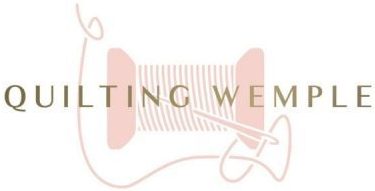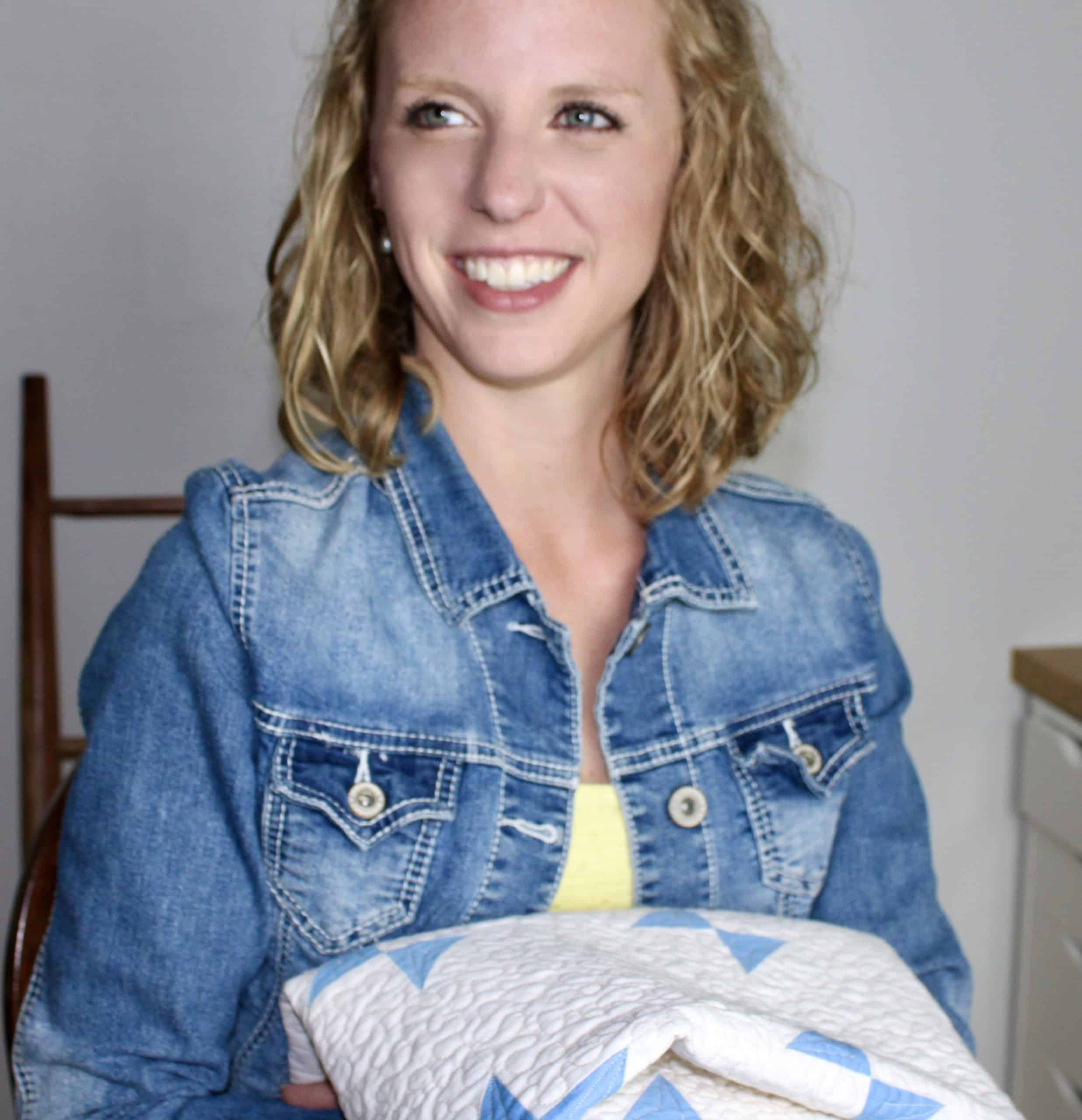When I started quilting I think there was no greater “myth” than needing to check your seam allowance every time you go to quilt.
When you read about it, you think, “oh yeah sure whatever, I’ve made a quilt in the past successfully without worrying about it. Its just a myth”
I myself am 100% guilty of this exact mentality.
Don’t get me wrong, I totally understood the concept behind why it was a thing. When your seam allowances are standard, everything just assembles easier and cleaner, and you just don’t have to wrestle with it any where near as much.
You are just more accurate in general.

For the longest time I just thought it took way more effort to keep a consistent 1/4” seam allowance than it did to match up seams and work in bulk from the differences. So I never saw the benefit of stressing about it while piecing tops together.
If you can’t tell, I was never the A+ student in school, I was always perfectly content with my B+ average. So the hyper focus on the 1/4” seam allowance thing is just not in my nature, I’m more of a go with the flow kinda person.
If you are like me, keeping your eye on that 1/4” mark is easier said than done and causes more strain on your eyes than necessary for a hobby. It’s 2021, there has to be an easier way.
So that’s when I stumbled on this great cheap hack to check your seam allowance and set it so it works automatically while you are sewing and you really don’t have to think twice about it.
Why your seam allowance changes

Going with just the 1/4” marking on your sewing machine deck might give you a consistent seam allowance, but if anything happens to your machine to damage the alignment of the needle, that position could change. That means that the 1/4” seam marking is no longer a 1/4”.
This can often happen from catching pins with the needle while sewing. When your needle strikes the pins, it forces the needle to the side, changing that distance marked by the plate. (Don’t ask me how I know…)
It can also happen as your machine ages and the pieces just don’t fit together quite as well as they used to and start to slip.
So it makes good sense to check your seam allowance every time to make sure it hasn’t changed and to get the most accurate piecing.
The two best notions you’ve probably never heard of
Seam Allowance Guide Ruler

This seam allowance guide ruler is not very large and isn’t made to measure more than 1/4” but is incredibly useful when paired with the second notion in this list and together they make a fool proof method to get the perfect consistent seam allowance.
The ruler has a small hole in the middle of it where you can drop the needle of your machine and measure out exactly 1/4” away from it, no matter what your brand is, no matter how your machine is set up, no matter how “off” the alignment might be from the plate measurements on your machine.
Drop your needle in the hole and then line up the edge of it with a straight edge of a plate on your machine so it sits square on the deck. Drop the presser foot to keep it in place.
Check out the seam allowance guide ruler on Amazon Here
Vinyl Adhesive Strip

Once you have your seam allowance guide ruler set up with your needle, all you have to do is take your vinyl adhesive strip and set it down in place butted up right next to your seam allowance guide.
The vinyl strip is significantly raised compared to your fabric pieces which makes it the perfect wall to stop your fabric from feeding past the point of a 1/4″. All you have to do when you are sewing is keep your fabric pushed right up against your wall as you sew.
These vinyl seam allowance strips turn getting that 1/4” seam allowance from a strain on your eyes, to second nature by touch instead – no eyes needed. Significantly more comfortable, you can sew faster, AND with better accuracy.
Win-win!
Check out the vinyl strips on Amazon here
It’s Just Easy and Fast

Other ways to check your seam allowance include sewing three strips of fabric together and checking the final width of the unit for accuracy. The thing I always struggled with with this method is taking the time to complete it.
Cutting everything accurately, sewing the two seams, doing the measuring.
I don’t want a huge production to “calibrate” my machine before sewing. when I get the inspiration to sew, I just want to sit down and go. The recommendation is to perform this EVERY TIME you go to sew!
Taking the time beforehand to go through all the steps just to check something as small as a seam allowance is so deflating that I am not likely to do it.
With the vinyl strip method you’ll get all the benefits of an accurate seam allowance without the production of taking 20 minutes to check it beforehand and you no longer have to strain to maintain it during the piecing process.
Related:
5 Ways to Get the Perfect 1/4″ Seam Allowance
Set it, forget it, and get beautifully consistent seams allowances in less than the amount of time it takes you to even thread the machine.
The best of both worlds.
At the time I’m writing this I haven’t been able to find these two notions in box stores near me, however they are super easy and cheap to find on Amazon, so if you’re itching to try out this method for setting your seam allowance, be sure to check out the Seam Allowance Guide Ruler here and the Vinyl Adhesive Strips here.









I’ve been struggling with the 1/4″ seam allowance as I return to sewing on a new model. The throat plate markings are simply impossible to see with the position of the light, and start at 3/8″ anyway. I’ve tried using the foot to guide me, but if I’m using a walking foot that’s a right royal pain to say the least. My sister suggested putting down a piece of tape, but then I can’t access the bobbin case, and anyway I couldn’t see the edge of the tape in the shadow of the edge of the (rather thin) quilt. The vinyl stripping sounds good, but how do you access your bobbin case? Thanks for the tutorial, it’s great of you to take the time to do that!
Hi Holly! You are not wrong it does get in the way of the bobbin case on my machine as well. Fortunately they use 3M adhesive that is meant to be pulled up and reset multiple times without losing the stickiness on the back, so all I do is pull up the strip from the end closest to the needle just far back enough to get to the bobbin. When my bobbin is back in place and good to go, I’ll pull out my seam allowance ruler from the article and set it under the needle quickly to re-lay the top end of the vinyl strip. The ruler is fantastic for quickly measuring out the scant 1.4″ so it takes less than 10 seconds to re-lay. The strips come in sets of 5 and in the not-quite-a-year that I’ve been using them I’m only on my second strip out of the original 5 that I ordered. Even with peeling them up to get to the bobbin, or removing them entirely for quilting, they are still going strong! I just place it back on the paper backing that they originally come with when I’m not using them so they don’t pick up dust or pet fur in the meantime. Hope this helps!
I’m a quilting newbie and am so confused with 1/4 inch seam or scant 1/4 inch. Do you just sew a 1/4 inch seam or do you measure the 1/4 inch and then adjust it somehow to be that scant 1/4 inch. If you sew 1/4 inch seams doesn’t that affect the final outcome?
Hi Jill! This is one of those topics that many people will have differing views over so take this with a grain of salt. I’ve used both ways with minimal effect positive or negative because I know even with the perfect setup I’m still likely to have slight differences in my seam allowances. The “scant” 1/4″ is used to compensate for the tiny amount of fabric that is used up when you press a seam to the side and fold that fabric open. The fold takes just a hair more of width, so by using a “scant” 1/4″ you’ll make the “perfect” 1/4″ seam. If you are able to maintain the perfect scant 1/4″ for every inch of seam across your whole quilt, you can, in theory, match up every seam and every point without even trying because your seam allowance will be 100% consistent. The seam allowance guide ruler in this article is actually designed for a scant 1/4″ not a true 1/4″ so you’ll get the benefit of the scant 1/4″ with this tool. I find that as long as you stay consistent with whichever one you choose you’ll be fine so experiment with both and see which one you prefer. I always try to keep a realistic view on it and try not to stress about perfection, there will be times when I accidentally move away from the vinyl guide causing a slightly smaller seam allowance in some places. So even with this tool I still intentionally pin seams and points to match up just in case. Using a system like this, whether it’s scant or actual, will just make the matchup process 10 times easier and quicker due to great consistency, you won’t find yourself with 1/2″ differences in block dimensions any more that cause pleats in the seams from the bulk and I find that I’m not resewing seams trying to match up points anywhere near as often. Hope this helps! Feel free to email me at paige@quiltingwemple.com if I missed anything and you have more questions!